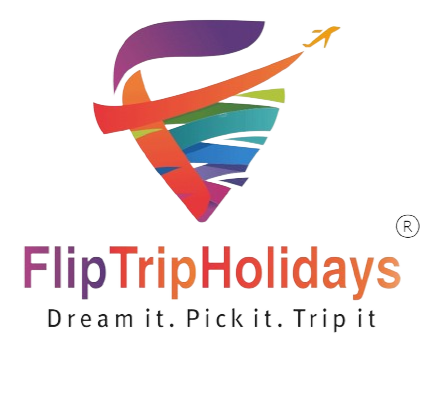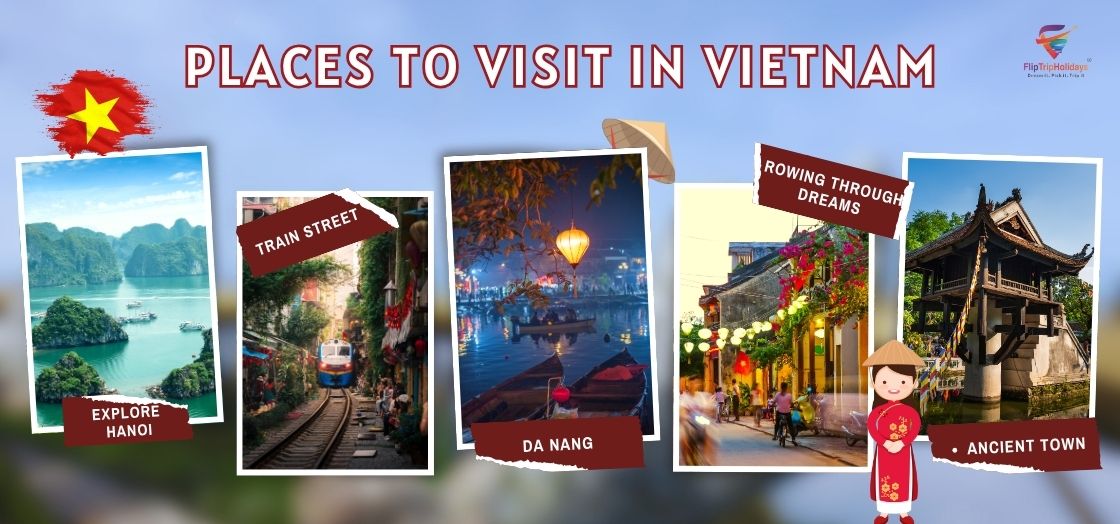Vietnam is stunning, but not every tourist spot lives up to the hype. From lantern-lit streets and limestone mountain ranges to bustling cities and tropical islands, Vietnam offers something for every type of traveller.
In this complete Vietnam travel guide, we bring you the Top 10 places you can visit in Vietnam, tips on what not to waste time on, and how to make the most of the trip. Whether you’re booking a trip or looking for a Vietnam tour package, this guide will help you map out the right choices.
To make this easier, we have categorized each of the 10 best places to visit in Vietnam into region-wise destinations.
Here’s a quick look-
North Vietnam
- Ha Long Bay cruise
- Hanoi
- Sapa
- Ninh Binh
South Vietnam
- Ho Chi Minh City
- Cu Chi Tunnels
- Mekong Delta ( My Tho)
- Phu Quoc Island
Central Vietnam
- Da Nang & surroundings
- Hoi An Ancient Town
Now let’s start exploring each place in detail-
1. Ha Long Bay Cruise
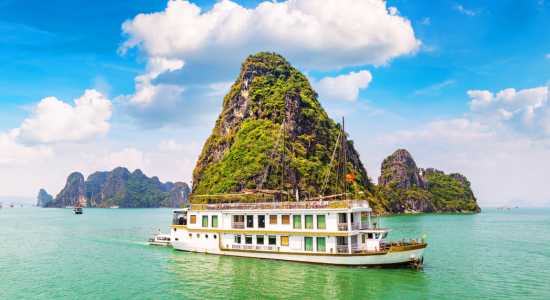
Planning your itinerary and wondering which place you should visit? Ha Long Bay deserves a spot. It is one of the most postcard-perfect places in the country. Whether you’re visiting for nature, photography, or simply to experience serene vibes, this UNESCO site will leave a lasting impression. Known for its striking limestone islands and calm emerald-green waters, it offers a unique cruise experience. Ideal for couples, families, or anyone else who is looking to disconnect from the city noise.
For most tourists, Ha Long Bay is a once-in-a-lifetime, must-do experience that is visually unforgettable. Though it is a place that most people do not return to on repeat trips, its grandeur makes it an important inclusion in any Vietnam Tour package, especially for first-time visitors.
Best Time to Visit-
- Ideal Time- The ideal time to visit Ha Long Bay is from October to March, when the weather is cool, dry, and the skies are clearer. This season gives you the best views and a smoother cruise experience.
- When to Avoid- Avoid going to this place during June to August, as this is the time when rainfall can be heavy, which leads to the cancellation of cruises due to the bad weather.
Local Tips & Budget Hacks-
Search for tour options that include transport from Hanoi, meals, and cruise activities. If you are starting your journey from Hanoi, look for cruises that include shared shuttle transfers to and from the city, as it saves both time and money. Many tour operators offer good value, especially if you are considering a broader Vietnam Tour package.
What to Eat & Where –
Most cruises offer Vietnamese meals only, which are often seafood-based. Vegetarian options are available if you inform in advance. For Indian travellers, carrying your own snacks is a smart move.
2. Hanoi
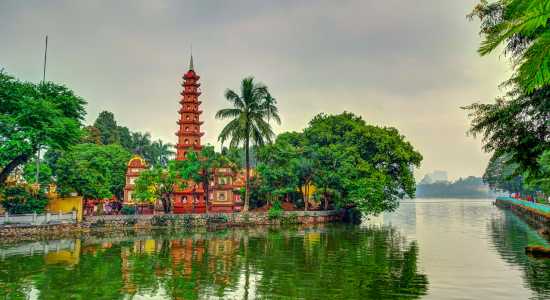
Hanoi, being the capital of Vietnam, is a beautiful city that beats well with culture, contrasts, and a quiet charm. If Vietnam were a melody, then Hanoi would be its rhythm. This lively capital is a perfect blend of heritage, budget shopping, tasty food, and a whole lot of city buzz. Here, you can go for early morning walks around Hoan Kiem Lake and then to late-night pho under neon signs. Hanoi is the place where unique museums, golden pagodas, and unlimited entertainment lie.
This is the place where tradition resides comfortably beside its colonial history and modern new life. The place is chaotic, soulful, and definitely unforgettable.
Best Time To Visit-
- Ideal Time: The ideal weather to visit Hanoi is during October-April, as at this time the weather is pleasant and dry, which makes it perfect for walking around the city and also exploring nearby spots like Ha Long Bay and Ninh Binh.
- Off-Season: Whereas, in the months of December to January, the weather is cooler, almost like sweater-weather, which is also great for sightseeing without sweating too much.
- When to Avoid: May- September should be avoided as they are the months when humidity is at its peak.
Local Tips & Budget Hacks-
- The Old Quarter is your best base to stay, as it offers affordable stays with Indian restaurants nearby and walkable markets.
- You should not take a cab from the Noi Bai airport, as they try to scam tourists in hopes of overcharging them.
- You can use the Grab app (Vietnam’s Uber), which is easy and safe to use.
- Always carry small cash for street food, markets, and tuk-tuks. Most attractions here are free or under ₹150-200.
What to Eat & Where-
- A true Hanoi classic is Egg coffee, which is sweet, creamy, and unique.
- Banh mi is a unique Vietnamese sandwich; you can ask for veg, tofu, or egg filling.
- For people with Desi taste buds, try Khazaana Indian Restaurant or Tandoor Restaurant Hanoi for your very own Indian delicacy.
What To Skip-
You can skip the Hanoi night market, as it is overhyped, filled with touristy trinkets, and cheap souvenirs. Also, you should avoid paying too much for puppet shows.
3. Sapa
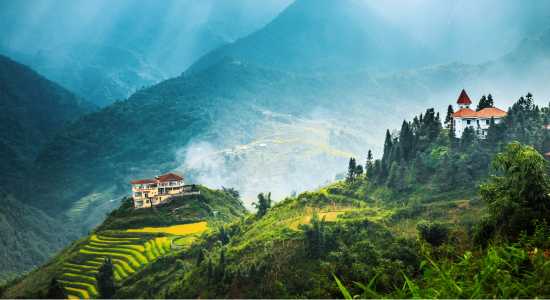
Sapa, tucked away in Vietnam’s Northern highlands, is a dreamscape that feels like a quiet dream. This is the place where adventure meets culture, and is also known as Vietnam’s hidden Himalayan cousin. Sapa is a small market town that shares its borders with China, and is home to some of the best trekking, terraced rice fields, and mist-covered valleys.
This place is also home to several ethnic minority communities, like the Hmong, Dao, and Tay, who still live there farming and weaving fabrics.
When coming to Sapa, Trekking is the heart of this region. Whether you are hiking through Muong Hoa Valley, taking a cable car ride to the Fansipan Peak, or having an overnight stay with a local family in a village homestay, Sapa is full of moments that you will always remember.
Sapa also lets you experience Vietnamese culture up close, as you’ll see women selling handmade fabrics, weaving clothes, and kids playing in village alleys. It is a must-visit place for Indian backpackers, couples, and people who really want to connect with nature.
Best Time to Visit-
- Ideal Time- September to November and March to May are considered the ideal months to visit Sapa, as the weather is pleasant and the skies are clearer. During September-November, you can get spectacular views of the golden-yellow terrace fields, which is a treat for photographers. March- May is also a great time to go Trekking and sightseeing, as you can see blooming flowers and green landscapes.
- Off-Season (But Worth it)- December to February are considered the winter months, when Sapa gets chilly, and sometimes it even starts snowing.
- When to Avoid- Peak monsoon months, which are from June to August, should definitely be avoided, as the trekking becomes difficult. Roads may get muddy or blocked, which can lead to slippery trails and landslides. This is not ideal for outdoor sightseeing and travelling with kids/elders.
Local Tips & Budget Hacks-
- Book an overnight sleeper train or bus from Hanoi to get here. This helps save on hotel costs and is budget-friendly and comfortable.
- You can hire a local Hmong guide directly from the village, and not through organized city tours.
- If you are planning to visit Fansipan Peak, then you should get up and be there early in the morning to take the cable car ride. So that you can get shorter lines and stunning views.
- Don’t overpack, as you can rent hiking and trekking gear like jackets and boots in Sapa at very affordable prices.
What To Eat & Where-
- Thang Co is a traditional Hmong dish that is made from horse meat. It is part of the cultural experience; you can try only if you are feeling adventurous.
- In Sapa markets, you will see vendors selling grilled skewers, which are mountain pork grilled on sticks.
- You can also try corn wine, which is a homemade rice wine, often served in local homestays. Sticky rice, which comes in different colours, is often served with grilled meat or eggs.
- For Indian restaurants, you can try some good places like Nirvana Indian restaurant or the Good Morning View Restaurant.
4. Ninh Binh
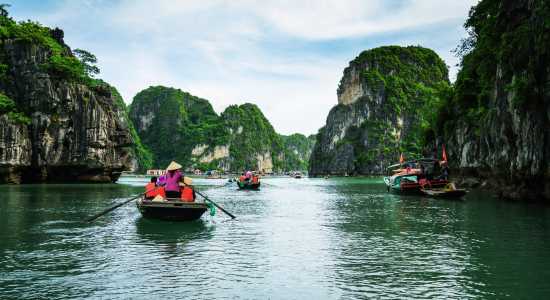
Ninh Binh is often called “Halong Bay on Land”. This place is Vietnam’s hidden postcard, filled with emerald rice fields and surreal limestone karsts that rise dramatically over the rice paddies. It is a calm place away from the city chaos, offering temples, boat rides, and a whole lot of countryside charm. Ninh Binh is only a few hours from Hanoi, and is a cheaper alternative to Ha Long Bay, being the perfect one-day trip if you enjoy nature and beautiful landscapes. Unlike Ha Long Bay, here you can glide through the caves and valleys in a traditional sampan boat that is rowed by locals, often with their feet. Here, you can enjoy Tam Coc’s rice fields, Trang An‘s cave routes, or Bich Dong Pagoda’s layered beauty. This place is perfect for couples, solo travellers, and families who are looking for a break from busy city life.
Best Time to Visit-
- Ideal Time- The ideal months range from March-May and September-early November, as the weather during this time is pleasant, and there is less humidity.
- Off-Season (Still Mangeable)- December to February are chilly, cold months that are also dry. These months are manageable as it is good for sightseeing, but the only con is that the rice paddies will be less vibrant.
- When to Avoid- You should avoid the months of June to August as those are hot, humid months with unpredictable rain, which are not suitable for sightseeing. Rain and muddy conditions can ruin your boat trips.
Local Tips & Budget Hacks-
- You can opt for staying in Tam Coc town, instead of Ninh Binh town, as it is more scenic and closer to other attractions.
- Tam Coc is only nice during rice season. Otherwise, you can take the Trang An boat ride instead of it, if you want more cave action.
- For local travelling and exploring, you can also rent a cycle or a scooter for ₹200-300 per day.
- Tourists can book Vietnam Tour packages and ensure that Ninh Binh is included in the itinerary. Flip Trip Holidays offers such tour packages.
What to Eat & Where-
- A local snack here in Ninh Binh is Com Chay, which are crispy rice crackers that you must try.
- Vegetarian restaurants are common here; you can look for places like Minh Khoi Vegetarian Restaurant for budget-friendly thalis. But if you are craving Indian food, then you must eat well in Hanoi before travelling to Ninh Binh.
- Also, a must-try in this place is their sugarcane juice or their infamous Vietnamese iced coffee, especially after temple climbs to keep yourself refreshed.
What To Skip-
- If you are short on time, you can skip the Bai Dinh Pagoda unless you are truly into religious sites. The place is huge but lacks charm compared to Bich Dong.
- You should avoid boat rides during midday, as it gets hot and crowded. Prefer going around mornings or late afternoons for a pleasant visit.
5. Ho Chi Minh City
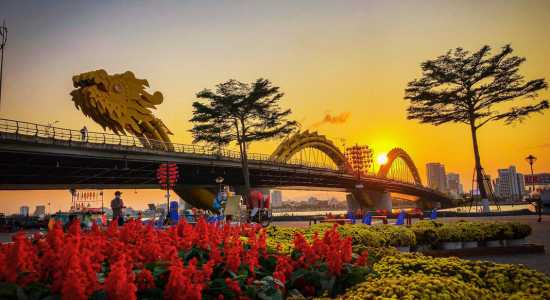
Ho Chi Minh City (formerly known as Saigon) is the financial capital of Vietnam, located in southern Vietnam. This capital city is all about late-night vibes and a whole lot of hustle. Imagine rooftop bars with beautiful skyline views, street food everywhere, and museums that tell Vietnam War history. This is what Ho Chi Minh City is. In this urban heart of Vietnam, you will discover Ben Thanh Market, War Remnants Museum, and other bars to live a loud, hustling life.
Ho Chi Minh is an ideal place for young couples, solo travellers, and people who love history. However, families with kids might feel overwhelmed and hectic because of the fast-paced life here.
Best Time To Visit-
- Ideal Time- The most ideal time to visit this city is from December to March, as these months bring cooler, dry weather. This weather is perfect for exploring museums and city markets without sweating too much.
- Off-Season- May to September are off-season months, as one can expect afternoon showers. It can be manageable if you carry an umbrella. But during this time, you can consider coming here if you are looking for cheaper hotels and flights.
- When To Avoid- You should avoid coming here from late June to August, as this time there is a lot of heavy rainfall and occasional flooding, which is not ideal for sightseeing.
Local Tips & Budget Hacks-
- Use the Grab app for cheap, air-conditioned taxis. This way is easier than bargaining with random bikers.
- It’s best to start your day early, as most museums close around 5 pm. For affordable shopping, you can try the Ben Thanh Market, but you will have to bargain politely here.
- You can skip Bui Ven Street if you are with your family and are not a fan of bar-hopping.
What To Eat & Where-
- You can give Banh Mi ( Vietnamese Sandwich) a try here. Also, you can try Vietnamese iced coffee from street-side vendors or from The Workshop Coffee.
- Visit Pho 2000- it is a famous place to have a Pho bowl- even Bill Clinton slurped a bowl here.
There are many Indian options like Shanti Indian Cuisine and Tandoor Saigon.
What To Skip-
- You can skip going to the Bui Vien Walking Street, as it is chaotic, overpriced, and not family-friendly.
- You can also avoid overpriced dinner cruises on the Saigon River, as the food is often average.
- If you are not good at bargaining, then you should also consider skipping Ben Thanh Market, as they quote double the price to tourists. You can try other fixed price places like Saigon Square Mall or the Aeon Mall instead.
6. Cu Chi Tunnels
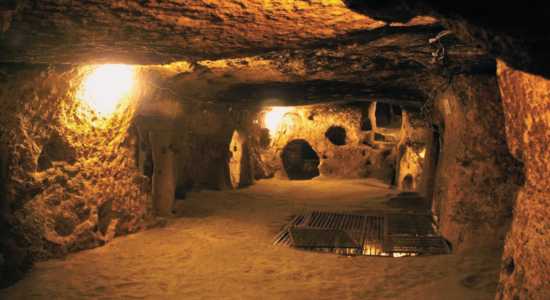
The Co Chi Tunnels are a one-hour drive from Ho Chi Minh City. A half-day trip to the Cu Chi Tunnels is absolutely worth it, as these narrow, hand-dug tunnels tell the story of Vietnam’s fight for Independence and survival. Here, you will relive the indigenous survival strategies of Vietnamese soldiers. It is a great place for people who are curious about real-world history, as you will see underground bunkers, kitchens, and shooting areas hidden here, beneath the dense jungle.
This place is ideal for solo travellers, history enthusiasts, and adventure seekers who want to know about Vietnam’s history. However, this place is not ideal for elderly travellers, young children, or someone who’s claustrophobic, as the hand-dug tunnels are extremely narrow and can feel suffocating. Some parts even require crawling and bending, which is definitely something that not everybody can do.
Best Time To Visit-
- Ideal Season- The best time to visit is from December to March (dry season) as the weather is cooler and comfortable for sightseeing.
- Off-season- May to October are the months that are less crowded, as it is the rainy season. While the tunnels are still open, paths are muddy, and the humidity can be very intense.
- When to Avoid- You should avoid coming to this place during mid-day hours, even in winter, as it gets hot and crowded with huge tourist groups. You can also skip Monday and weekends to avoid local tourists.
Local Tips & Budget Hacks-
- It is advisable to book a half-day tour from Ho Chi Minh City as it is the most convenient way to visit.
- You should always carry a water bottle, a small towel, and also wear comfortable clothes when visiting, as you will be sweating a lot, especially inside the tunnels.
- One last tip is to not forget to book your Vietnam Tour Package in advance, as Flip Trip Holidays often includes a visit to Cu Chi Tunnels as part of their Vietnam and Cambodia tour package.
What To Eat & Where-
Cu Chi does not have much food variety at the tunnel itself, but here is how you can plan-
- You can try the boiled Tapioca, which is paired with crushed peanuts; it is a local wartime snack.
- For proper meals, you can stop at a local eatery or head back to Ho Chi Minh City for a wider range of food options.
- Also, if you are on a Vietnam Tour Package, lunch is often included, which is a Vietnamese meal with rice, spring rolls, and other options.
What To Skip-
- You can avoid crawling or bending inside the tunnel, as the tunnel crawl is not mandatory. The surface-level exhibits offer enough historical value.
- You can also skip the shooting range unless you are specifically interested in it. It is expensive, ranging from ₹300 to ₹700 for a few bullets, and now everyone enjoys it, especially if you are sensitive to loud noises.
7. Mekong Delta ( My Tho)
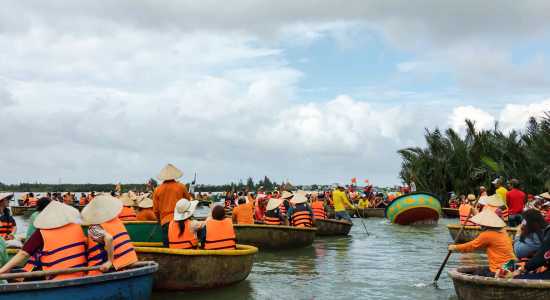
The Mekong Delta is Vietnam’s lush river region that has floating markets. It is one of the best places to visit in Vietnam. Being nicknamed the Rice Bowl of Vietnam, the Mekong Delta is where the land and water meet in a maze of floating markets, green paddy fields, and stilt houses. More than half of Vietnam’s requirement of rice and fish is provided by the Mekong. This place is for people who want an earthy experience, from holding a python to enjoying fresh tropical fruits.
My Tho is a popular gateway in the Mekong Delta region, which offers boat tours that will take you through bee farms, fruit orchards, and calm waterways. My Tho is known for traditional folk music, calm water beds, cruises, and coconut candy-making fields. You should definitely add this place to your trip to Vietnam, as this is a refreshing place, ideal for people who want to experience rural Vietnam without staying too far from the cities.
Mekong Delta is a place ideal for families with kids, couples who are looking for a rural, laid-back experience
Best Time to Visit-
- Ideal Time- The Best time to visit the Mekong Delta is during your year-end holidays between November and February, when the weather is cool and dry. You can easily enjoy the boat rides during this time, as the water is calm and serene.
- Off-season- March to May is off-season time when the weather is hot and humid, but also still manageable for early morning boat rides.
- When to Avoid- You must avoid coming here during monsoon season, which typically lasts from June to September, as the weather is not suitable for water-related activities.
Local Tips & Budget Hacks-
- It is advisable to book a day tour from Ho Chi Minh City, as it is the most affordable and trouble-free way to visit My Tho. The tour prices start around ₹800-1,200, depending on what is included in the package.
- You should also carry cash, as small vendors at Delta do not accept card payments.
- Always carry a water bottle, a hat, and sunscreen handy, even in the cooler season.
What to Eat & Where-
- You can try local specialities like Elephant Ear Fish (Ca Tai tuong), tropical fruit platter, and the famous cotton candy, which is made fresh in local factories.
What to Skip-
- You can skip the Cai Be floating market if you are short on time, as it is smaller and less active than expected.
8. Phu Quoc Island
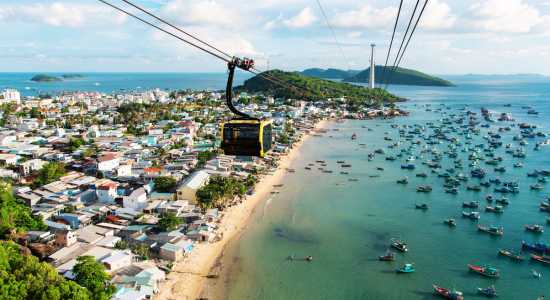
Phu Quoc is the biggest island in Vietnam, which is often compared to Phuket or Bali. This place is home to beautiful white sand beaches, turquoise waters, seafood shacks, and sunset views that look straight out of a movie. This island in the southern region of Vietnam has a vibe like no other. The Island offers everything from luxury resorts to beach shacks and sunset bars. It is an easy place to reach, through its International airports and frequent flights. This place is located just 4km from Cambodia, which means that you can look up the Vietnam and Cambodia tour package given by Flip Trip Holidays for a guided tour to this place.
Phu Quoc has pristine beaches, Long Beach (Bai Truong), Ong Lang Beach, and Sao Beach (Bai Sao), each of them offering its own charm and beauty. Beyond the beaches, the island also offers dense jungles, scenic waterfalls, and wildlife reserves like the Phu Quoc National Park, where you’ll find diverse flora and fauna, including rare wildlife. Here, snorkeling, scuba diving, and fishing are popular due to the island’s rich marine life.
This place is ideal for couples who are looking for a relaxing beach getaway. Also, families with kids can come visit, as there are swimmable beaches and attractions like Vinwonders theme park and Safari Zoo.
Best Time to Visit-
- Ideal Time- November to March is the best time to visit Phu Quoc Island, as the weather here is dry, pleasant, and cool.
- Off-season (but still okay)- You can also visit during April to June, but the temperatures are warmer, and there is an increase in humidity level.
- When to Avoid- You should avoid coming here from July to early October, as it is the rainy season. The boat tours might get cancelled, and the beaches may not look their best.
Local Tips & Budget Hacks-
- The best way to explore the island is by renting a scooter. You can also explore other options, like a bicycle or a taxi.
- Here, on this island, there are options for luxury resorts. But, you can also opt for local stays and 3-star hotels under ₹2000 per night near Duong Dong town.
- Many tourists think that Phu Quoc Island is walkable, but it’s a big island, so you should choose your transport wisely.
What to Eat & Where-
- You must try the seafood BBQ platters and the crab noodle soup, as these are Phu Quoc Island’s specialty.
- You must try the pepper crab, as it is made fresh from the island’s pepper crab farms.
- You can try eating at the Ra Khoi Restaurant, the Bup restaurant. For Indian flavour, you can try the Ganesh Indian restaurant.
9. Da Nang & surroundings
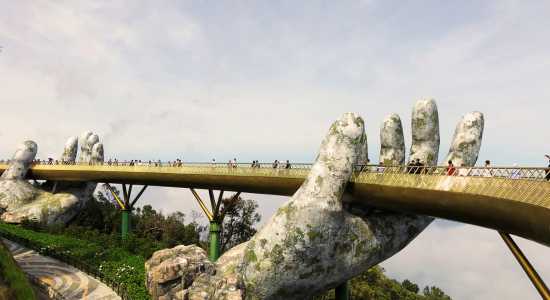
Da Nang is Vietnam’s cleanest and livable city. This city sits comfortably between Hanoi and Ho Chi Minh, and is often considered the best base to explore Central Vietnam. Da Nang is the kind of place that rarely disappoints. There is spiritual calm at Marble Mountains or the beauty of the whimsical Golden Bridge, which is held by two giant hands in the clouds. It is also home to Ba Na Hills and the most famous Fantasy Park.
This place is loved by families, who love to visit the Fantasy Park, solo travellers are attracted to the clean beaches and beautiful temples, and even couples are excited to try out the cable car ride over the misty mountains of Ba Na Hills.
If you’re planning a Vietnam trip that balances culture, relaxation, and adventure, then Da Nang definitely deserves a spot.
Best Time to Visit-
- Ideal Time- The ideal time to visit Da Nang is when the skies are clear with moderate temperatures, and less crowd. This happens during the months of February to May.
- Off-Season- June to August are the months that are hot but also still manageable. These months are good for budget travel, only if you are okay with the heat.
- When to Avoid- You should avoid coming here from September to November, as the weather is not suitable. It is the Typhoon season with heavy rains. Most attractions like the Ba Na Hills are shut due to bad weather.
Local Tips and Budget Hacks-
- It is advisable to visit Marble Mountains early in the morning or late evening to avoid the heat and also the climbing rush.
- Also, it is economical to use local buses and Grab (Vietnam’s Uber). You can also use GrabBike if travelling solo.
- Buy a combo ticket to Ba Na Hills, which includes the Cable car, the Golden Bridge, and the Fantasy Park. You can also book online in advance to avail discounts.
- Staying near the beach or riverside in Da Nang city is both convenient and affordable for exploring all attractions.
What to Eat & Where-
- Mi Quang is a must-try dish. It is the signature dish of Central Vietnam that is available in most places.
If you are craving Indian food, then you should head to Family Indian Restaurant or Mumtaz Indian, which are - restaurants rated highly by Indian tourists. Both are located in Central Da Nang.
What to Skip-
- If you are not into arcade-style rides or are travelling without kids, then you can skip Fantasy Park. You can skip most of the park and enjoy the views instead.
- It is advisable to skip visiting Ba Na Hills on weekends and holidays, as the queue for cable car rides can be extremely long and tiring.
10. Hoi An Ancient Town
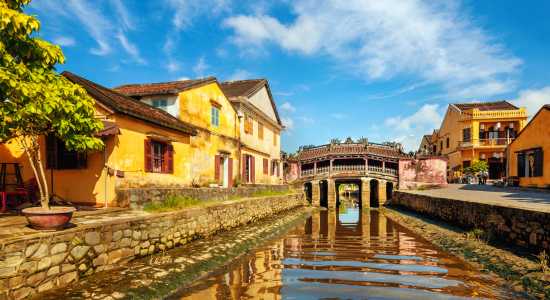
Welcome to Hoi An, Vietnam’s lantern capital. This place was declared a World Heritage site by UNESCO in 1999. The name, “Hoi An”, translates to a peaceful meeting place.
Hoi An feels like a living museum, with its ancient architecture, peaceful temples, and the calm Thu Bon River. This yellow-walled place looks like the perfect blend of Japanese, Chinese, and French influences. The narrow alleys, quaint cafes, and riverside walkways make this place warm, cosy, and a worthy cinematic experience.
During the day, there are plenty of heritage buildings and local markets to explore, but the evenings here are magical. As the sun sets, the town is beautifully lit with colourful lanterns hanging across the streets, bridges, and boats. When walking around the market, you will come across local tailors, antique stores, tea houses, and beautiful cafes. Hoi An captures your senses like no other, a calm place with roots in history.
Best Time to Visit-
- Ideal Time- The appropriate weather to visit Hoi An is during February-April, as the days are pleasant, the skies are clear, and the humidity is manageable. This time is perfect for walking, beach visits, and enjoying the lantern-lit evenings.
- Off-Season- May to August can be visited, especially for people who are looking for fewer crowds and better deals. The weather is warm, but still manageable with early morning and late evening strolls.
- When to Avoid- You can avoid coming here from September to November, as there are heavy rains, making Hoi An prone to occasional flooding.
Local Tips & Budget Hacks-
- Hoi An does not have an airport or train station, making it accessible to people travelling by road.
- You can explore the town on foot or by renting a bicycle for just ₹100-150 per day. This is the best way to explore hidden temples and spots.
- Don’t skip the boat ride on Thu Bon River, which you can do for just ₹300-400 per boat if you bargain wisely.
- Visit during the monthly Full Moon Lantern Festival (dates vary) to experience streets lit with vibrant lanterns.
What to Eat & Where-
- You must try Cao Lau, which is a regional noodle dish. Also, White rose dumplings are a favourite among people.
- One of Vietnam’s best is Banh Mi Hoi An, which is packed with pork, pickled vegetables, and chilli sauce.
- You must visit and try Madam Khanh, which is a famous place to try the Banh Mi.
- For Cao Lau and dumplings, you can head to Morning Glory Original.
- Other than this, there are several street restaurants, local homes, and cafes that serve amazing, delicious food that are worth trying.
Packing Tips & Essentials for Vietnam
Before you explore the Top 10 places to visit in Vietnam, this is what you should toss in your suitcase-
- Jacket or hoodie ( warm clothes) for chilly spots like Sapa or Da Nang at night.
- Comfortable walking shoes to explore markets and towns.
- Hiking shoes to cover North Vietnam.
- Scarf or shawl for temple visits
- Mosquito Repellant, which is a must carry to places like Ninh Binh, the Delta, and other rural areas.
- Sunscreen, hat, and sunglasses, even in winter.
- Light, linen, airy clothes for humid places like Ho Chi Minh City and Hanoi.
- A small foldable umbrella or a raincoat is a must, as surprise showers are common.
- Power Adapter (Type A/C/D) for all your electronic gadgets.
- Reusable water bottles, to avoid plastic usage.
- Must carry cash in small denominations because many local eateries and shops prefer cash payment. ATMs are also available, but it is better if you keep some Dong handy for usage.
- Emergency medicines for motion sickness, pain relief, and digestion.
- Carry your documents- passport, Visa, and travel insurance. You can carry copies too!
Pro Tip- Overpacking is common, but you do not need to worry. Vietnam is easy to travel light, as you can get everything here at affordable prices.
Conclusion
Vietnam is your go-to destination for exploring diverse landscapes and cities. Narrowing down the places to visit in Vietnam is no easy task. If you would like to skip the research and planning process, then you can book your Vietnam Tour Package from trusted travel companions like Flip Trip Holidays.
This extensive travel guide focuses on the Top 10 best places to visit in Vietnam, cautiously handpicked for their beauty, charm, and scenic views. Be it hiking in Sapa, lounging in Phu Quoc Island, strolling through lantern-lit markets, discovering ancient streets, visiting sacred temples, or learning Vietnamese war history, this guide has it all. To save you some trouble, we have also added some places that you might want to skip since not every place lives up to the hype.
Planning your itinerary can get really overwhelming, especially if you are visiting for the first time. That is why this travel guide includes the best time to visit Vietnam, which is catered to keeping in mind all the different regions. This blog will help your trip become smooth, as it provides a complete food guide, local tips, saving hacks, and even packing tips for Vietnam.
